Helen lived—if she lived at all—around 1200 BC, in an era we call the Mycenaean age of Greece. Helen actually came from Sparta, not Troy, but she became forever “Helen of Troy” when she eloped with the Trojan prince Paris, launching a thousand ships, (and today, a thousand hair-care products named after her).
I’d like to share some photographs I took while following Helen’s life in both Greece and Troy.
When Helen– the offspring of Leda, Queen of Sparta, and her tryst with Zeus in the form of a swan—was only a child, a Sibyl at Delphi foretold that she would cause a great war, and because of her many Greeks would die. The crone’s rock is still there, near the temple of Apollo where the oracle would later sit.
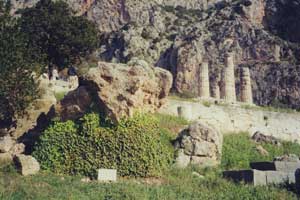
What did Helen look like? Today’s movies and paintings make her a blonde, but ancient Greek paintings show her as a brunette. Homer merely tells us she was “white-armed, long robed, and richly tressed,” leaving the rest up to our imagination.
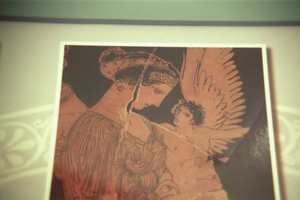
Helen had twin brothers, Castor and Polydeuces, and a sister, Clytemnestra. Clytemnestra later grew up to be the classic avenging, murderous wife, stabbing her husband Agamemnon in his bathtub when he returned from the Trojan War.
In ancient times, different ruling houses had their own patron gods and goddesses. In the novel, Demeter and her daughter Persephone are the protectors of Helen’s household. In one episode, Helen is shown attending the mystery rites of the goddesses. These rites began in Mycenaean times and lasted in some form until recently.


Snakes were also considered sacred, and many households kept a sacred snake. It was thought that if a snake at a sanctuary licked your ear you would receive the gift of prophecy.
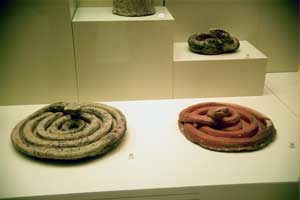
When Helen lived in Sparta, it was not ‘Spartan’ as we know the term. The military Sparta did not arise until some six hundred years after her time. In Helen’s day, it was a place of sophisticated music, poetry, and dining. The valley wherein it lay was very fertile, watered by the Eurotas River, and it was surrounded with the rugged Taygetus range of mountains; it was a beautiful, lush place with dramatic scenary.
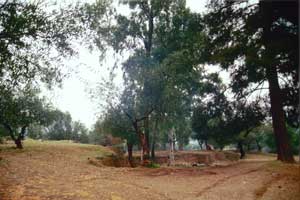
The crown of Sparta passed through the woman, and so in choosing a husband Helen was also choosing the future king of Sparta. After the customary suitors’ contest, where more than 40 men competed for her hand, she chose Menelaus of the house of Atreus in Mycenae, the younger brother of Clytemnestra’s husband Agamemnon.
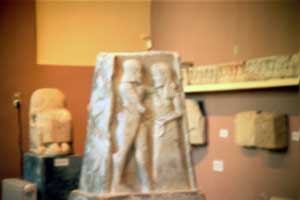
When Menelaus died, long after the Trojan War which he survived, he was buried in a stone mausoleum high above the river Eurotas. One legend says that Helen was also buried there beside him, and that a visit to her tomb had the power to bestow beauty on supplicants. Certainly the site today is powerful and evocative.

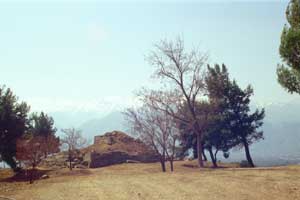
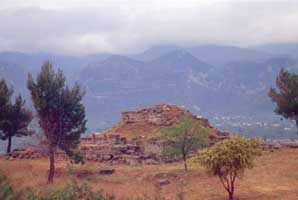
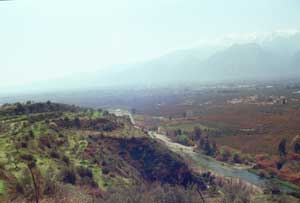
Helen and Menelaus lived peacefully for ten years, and had a daughter, Hermione. But when Paris, a Trojan prince, came to Sparta on a diplomatic mission, he and Helen became inflamed with love and ran away together. Paris was very handsome and allied with Aphrodite, the powerful goddess of love.

Sparta is some thirty miles from the sea; the first night Paris and Helen only got as far as a small island just off the coast, called Cranae. The photo, taken there, shows the spectacular sunsets they could have seen.

The Mycenaean world that Helen left behind has also left us many relics.
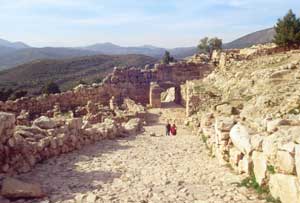

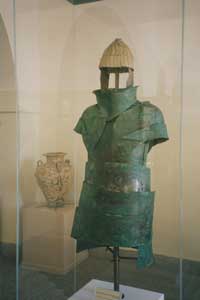


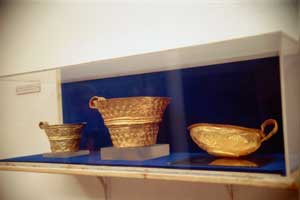

The first thing that would have struck Helen as she approached Troy were its famous formidable walls. Today they are only about a third as high as they stood in ancient times. Troy was lost for many centuries and only rediscovered at the end of the 1800s.
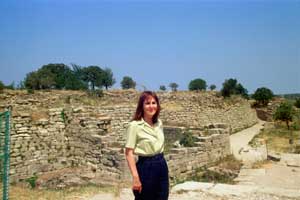

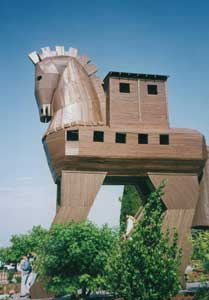
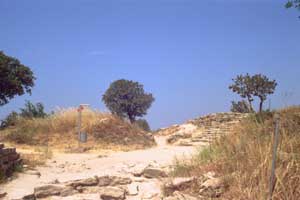

I recently finished listening to the audio book on Helen. It was so exquisitely done, as was the novel!
I was very taken with the character development. Perhaps the story so deeply moved me as I am now in my sixties, and am experiencing the bittersweetness of loss in my own life.
Thanks you.